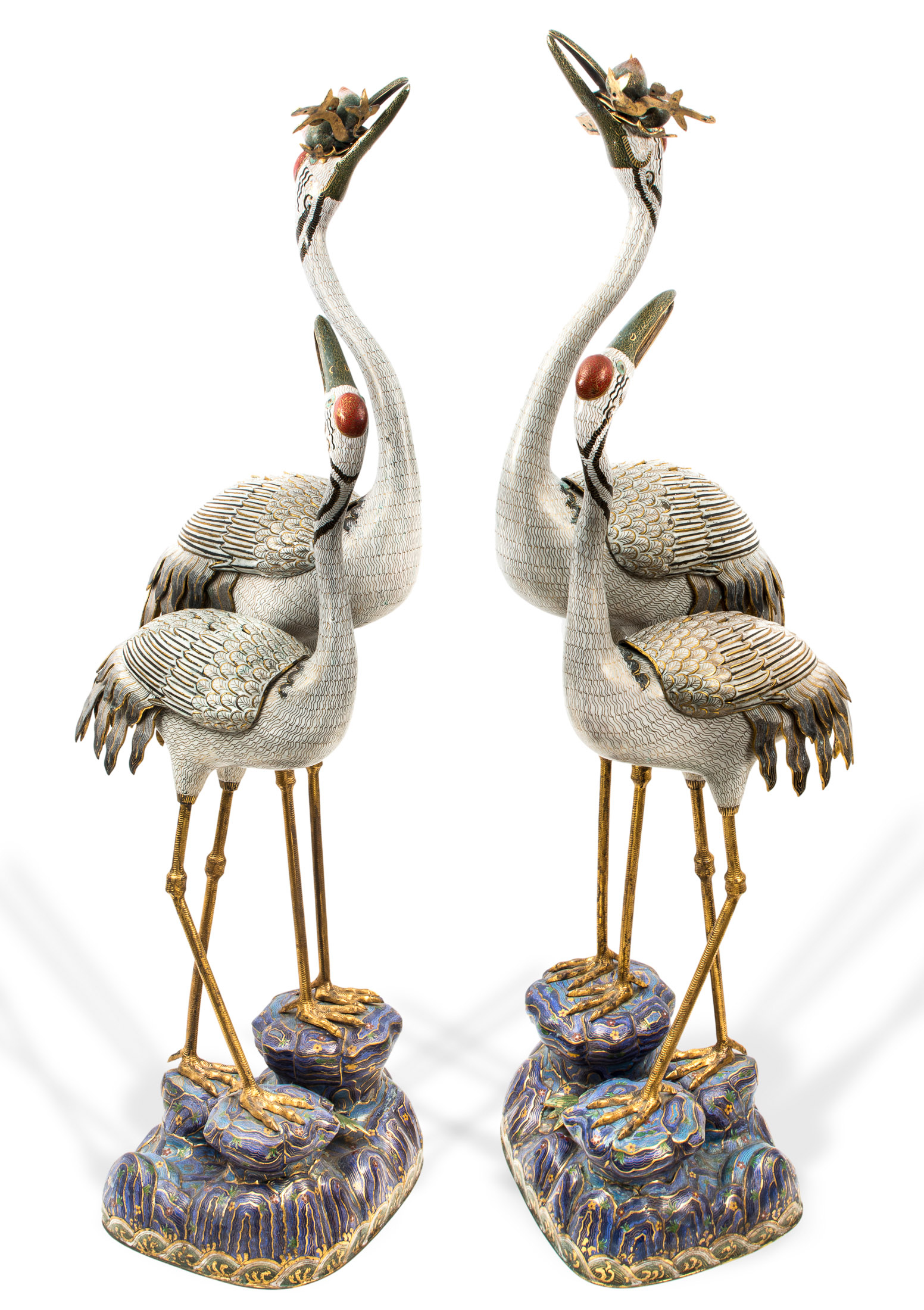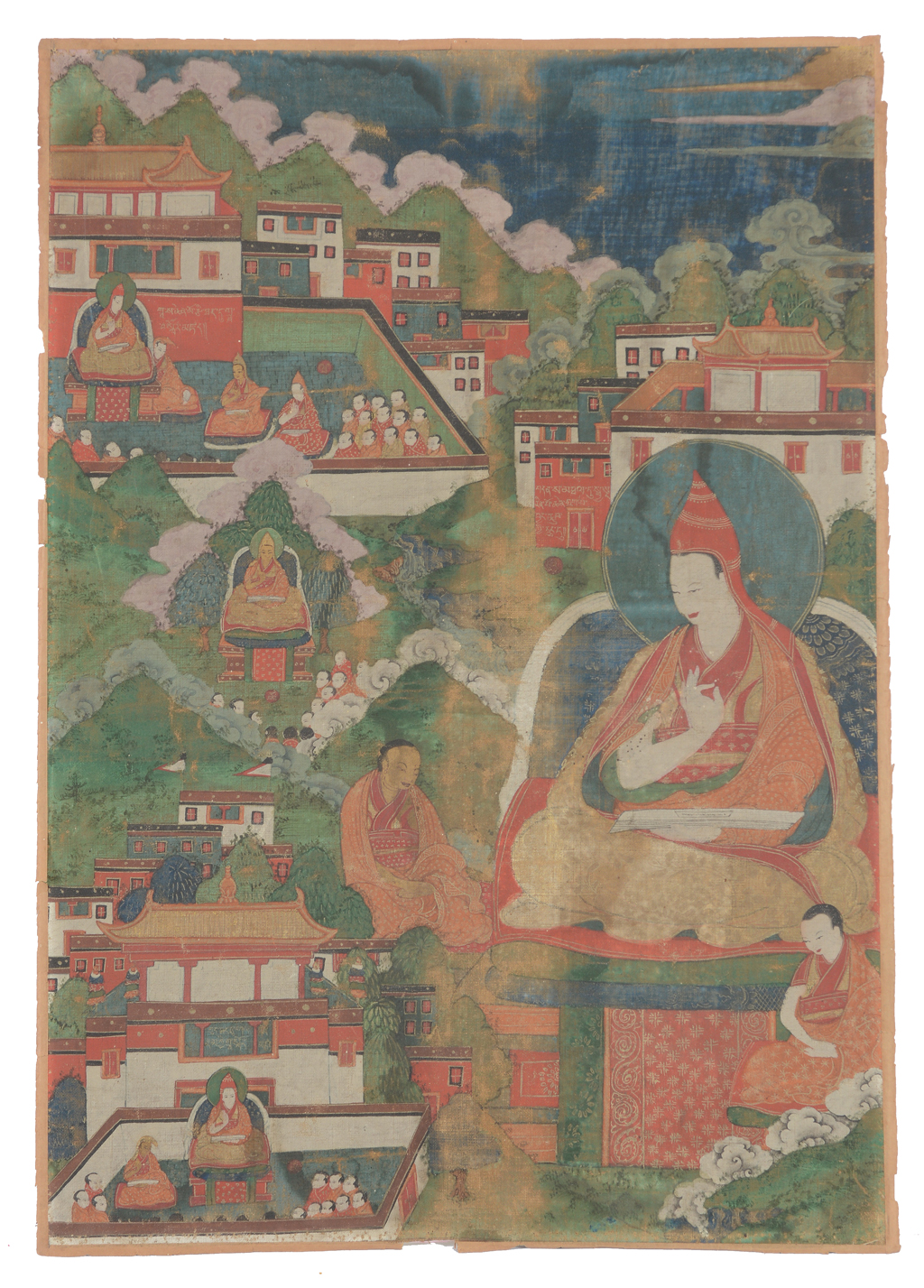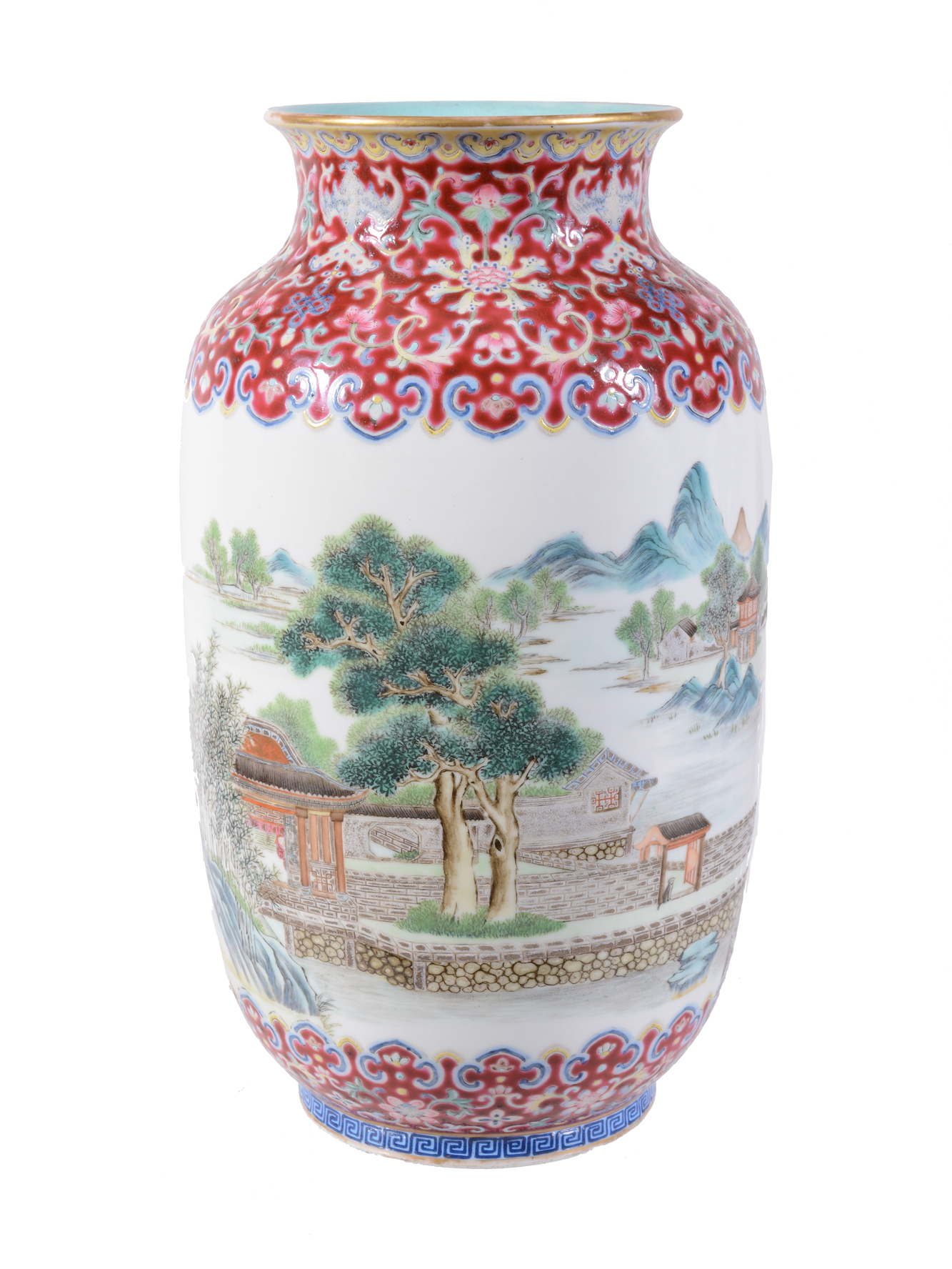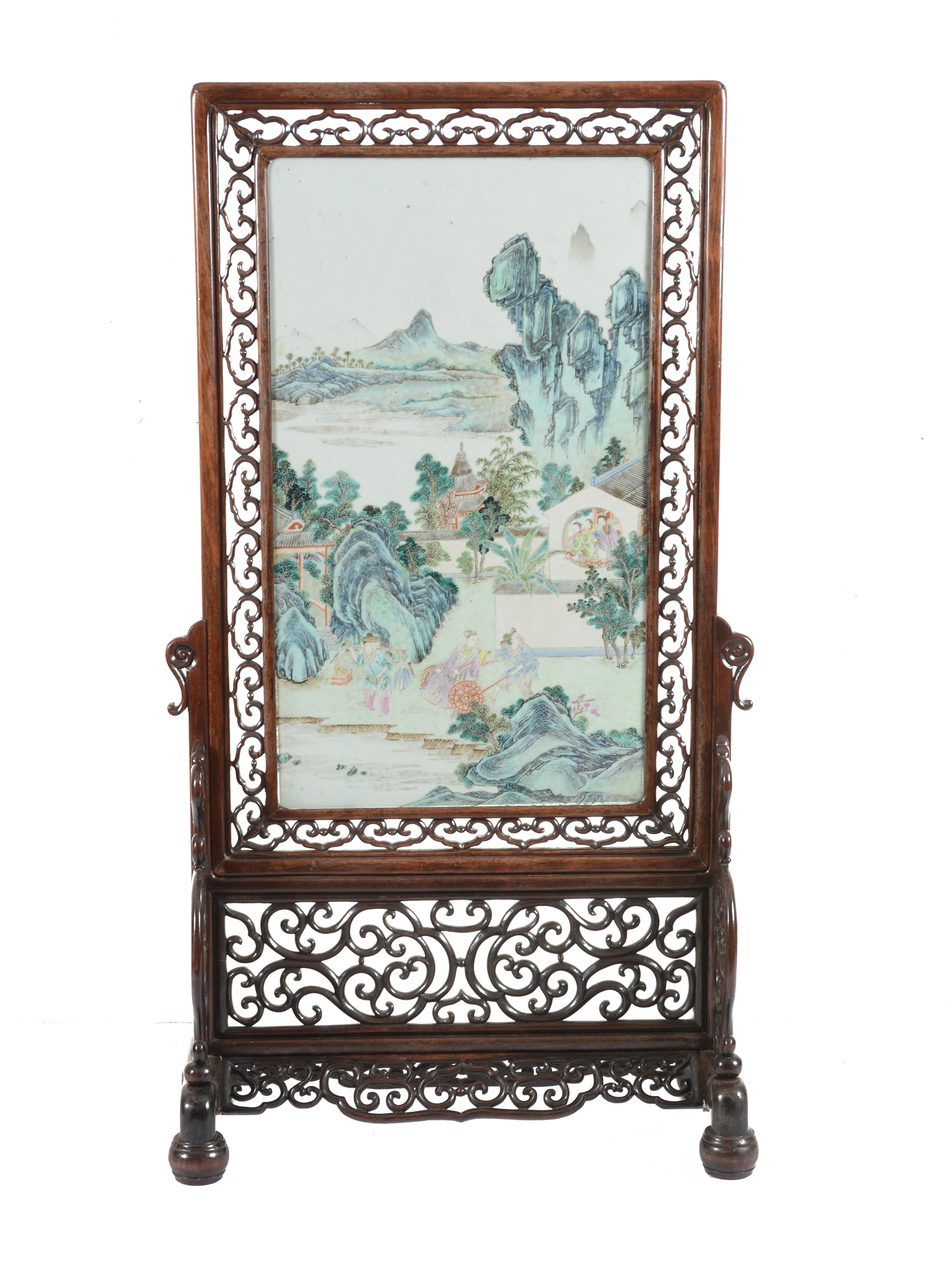NEWBURY, UK – Dreweatts will present the company’s first Chinese ceramics and Asian works of art sale of 2015 on Tuesday, May 19. Featuring 170 lots from Yuan through Ming, Qing and the other Imperial dynasties to 20th century, the auction features textiles, ceramics, works of art and artworks from a number of private collections. The auction will be held at Dreweatts’ Donnington Priory.
LiveAuctioneers.com will provide absentee and Internet live bidding.
“With works spanning eight centuries of Asian art history the auction appeals to buyers of all tastes,” said Mark Newstead, Dreweatts’ head of Asian and European ceramics and works of art.
The jewel from one family’s private collection and leading the works of art lots is a large pair of cloisonné enamel double crane censers measuring 60 inches high. As birds with a long life span, cranes are associated with longevity, immortality and wisdom in Chinese tradition, particularly following the rise of Daoism from the Han dynasty. The pair has been in a family collection for a number of generations and is estimated to achieve 6,000-8,000 pounds ($9,034-$12,045).
A 19th century rare embroidered Imperial apricot ground, twelve symbols dragon robe leads the textile works in the sale. Imperial dragon robes were worn during festive holidays by the emperor and as such were adorned with the twelve symbols of Imperial sovereignty arranged in groups; the sun, the moon, the stars, the dragon, and the flowery fowl, which are depicted on the upper garment, the temple-cup, the aquatic grass, the flames, the grain of rice, the hatchet, and the symbol of distinction, which are embroidered on the lower garment (estimate: 8,000-10,000 pounds).
Bridging the gap from textiles to artworks is a 17th–18th century rare Tibetan thangka (painting on cotton or silk) of Shantirakshita, the Guardian of Peace, a renowned eighth century Indian Buddhist Brahim and abbot of Nalanda (estimate: 2,000-3,000 pounds).
Already attracting attention in the ceramics section of the sale is a Republican Period vase amusingly painted, with a figure hiding and peeking out from inside a pagoda and a seated dog at the entrance to a palace garden estimated at 800-1,200 pounds.
A good 19th century porcelain screen depicting a walled garden and mounted in a hardwood frame stands about 37 inches high (estimate: 800-1,200 pounds).







